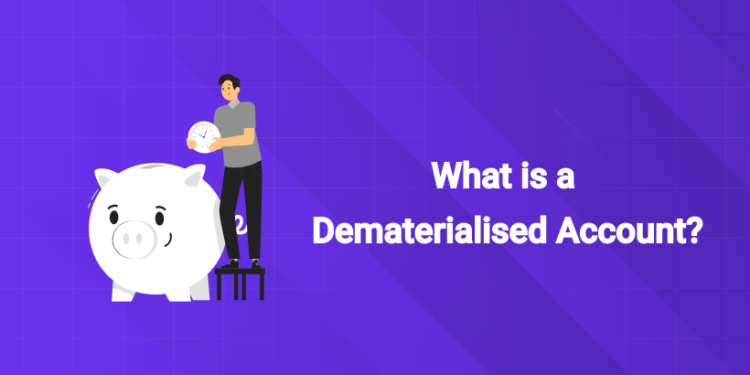Table of Contents
Introduction
In today’s digital investment world, understanding what is a Dematerialised Account? is crucial for anyone looking to hold shares or securities electronically. This article explains the concept clearly, describes the Dematerialised account meaning, and outlines the Dematerialised account benefits you can expect.
What Is a Dematerialised Account? – Dematerialised account meaning
1: What is a stock?
When you ask What is a Dematerialised Account?, you’re referring to what is commonly known as a “demat account”, an electronic account that allows you to hold shares, bonds, mutual funds, and other securities in digital form.
In essence, the dematerialised account meaning is that physical share certificates are replaced by electronic entries, significantly reducing the paperwork and risk associated with traditional paper-based certificates. For example: previously, when you bought shares, you received physical certificates that you had to keep safe; now with a dematerialised account, your holdings are credited electronically to your account.
Learn Stock Marketing with a Share Trading Expert! Explore Here!
Why a Dematerialised account is essential in modern investing
With the evolving regulatory and technological environment in securities markets, the answer to What is a Dematerialised Account? also reflects why you need one.
– Market regulators have made it mandatory in many markets (including India) to hold securities in dematerialised form for trading efficiency.
– Holding securities electronically via a Dematerialised account means faster settlement, simpler transfers, and fewer errors.
– It aligns with how digital investing works today: access from devices, consolidated holdings in one place and enhanced transparency. The dematerialised account benefits thus extend beyond mere storage.
Major types and features of a dematerialised account
To fully grasp the Dematerialised account meaning, it helps to look at types and features:
Types
- Regular Dematerialised account: for resident investors managing their own holdings.
- Repatriable or Non-Repatriable Dematerialised accounts: for non-resident investors with different fund transfer permissions.
Key Features
- Electronic holding of securities: you can hold shares, bonds, mutual funds, ETFs in your account.
- Linkage to trading and bank accounts: to buy/sell and to clear funds.
- Instant access / online statements: view your portfolio anytime from a device.
- Faster settlement and transfers: electronic transfers reduce manual delays.
Dematerialised account benefits – key advantages for investors
Here we focus on the Dematerialised account benefits, and show how they positively impact investors.
Safety of holdings
With a Dematerialised account, you avoid risks of loss, theft, damage or forgery of physical certificates – a core benefit of switching to a digital holding.
Convenience and accessibility
The best part is that you can access your holdings from anywhere, monitor your portfolio, receive notifications and perform transactions online. The benefit: minimal paperwork and easier administration.
Cost and time savings
Physical transfers involve stamp duty, handling charges, delays. A Dematerialised account removes or reduces those. This cost-efficiency is a clear benefit.
Enhanced liquidity and transferability
Since securities are held electronically, transfers (to someone else, or as collateral) become simpler and quicker. The benefit: easier movement of assets.
Unified portfolio management
You can hold different asset classes (equity, bonds, mutual funds, ETFs) in one place. This consolidation enhances your control.
Automatic corporate benefits
Bonus shares, rights issues, split shares etc. often get credited automatically to your Dematerialised account — reducing manual intervention.
Each of these underscores why you should think: “What is a Dematerialised Account?” and focus on the meaning and benefits while planning your investments.
Stock Market Training Reviewed & Monitored by SEBI Registered RA
Trusted, concepts to help you grow with confidence. Enroll now and learn to start investing the right way.
Know moreHow to open and use a Dematerialised account: step-by-step
To make the most of the dematerialised account benefits, you need to understand the opening and usage process.
- Choose a Depository Participant (DP): A DP is an authorised intermediary via which you open a Dematerialised account.
- Complete KYC and account-opening formalities: Provide identity, address proofs and submit the application along with necessary documents.
- Get your account activated: Once verified, you get an account number (beneficiary ID or similar) and access credentials.
- Link with trading and bank account: Since buying and selling require a trading account and a bank account for funds.
- Transfer existing physical holdings (if any): If you have physical share certificates, you file a dematerialisation form (DRF) and submit the certificates; once processed they get credited to your Dematerialised account.
- Transact and manage your holdings: You can buy/sell securities; your holdings will show in the Dematerialised account, and you can track them online. Regular statements, alerts, and ability to transfer holdings to other accounts.
By following these steps, you ensure that you harness the full scope of Dematerialised account benefits as well as understand the Dematerialised account meaning in practical terms.
Potential pitfalls and how to avoid them with your Dematerialised account
Though the advantages of a Dematerialised account are countless, it is also necessary to be aware of potential pitfalls:
- Account maintenance costs or inactivity charges: Some accounts come with annual maintenance fees or minimum investment thresholds. Always check the terms.
- Incorrect linkage or KYC issues: Errors in linking bank/trading accounts or missing KYC may cause a delay in transactions. Make sure that everything is complete and verified.
- Mishandling of credentials or security lapses: Since access is digital, secure your login credentials, use strong passwords and monitor for any unauthorized activity.
- Assuming it replaces a trading account: A Dematerialised account holds your securities; you still need a linked trading account to buy/sell. Confusion here may hamper your investing.
- Ignoring statements or alerts: Just because holdings are electronic doesn’t mean you can ignore checking them. Monitor for any corporate actions, debits/credits and manage accordingly.
By being informed of these aspects, you can maximise the benefits of your Dematerialised account and avoid leaks or oversight.
Learn Stock Marketing with a Share Trading Expert! Explore Here!
Conclusion
To sum it up, understanding What is a Dematerialised Account? means recognising both the definition and the power of holding securities electronically. The Dematerialised account meaning is firmly anchored in modern investing: digital, secure and efficient. And the Dematerialised account benefits are clear, from safety and convenience to lower costs and improved portfolio management. For anyone interested in investing in shares, mutual funds or other securities, a demat account is no longer optional; it’s a basic requirement. By choosing the right account, completing the setup properly and staying vigilant, you can be in a better position to invest smartly in today’s digital era.
Key Takeaways
- A dematerialised account is an electronic account holding securities in digital form — eliminating physical certificates.
- The meaning revolves around converting paper-based holdings to digital and managing them online.
- Main benefits include increased safety, cost savings, convenience, better liquidity, consolidation of assets and automatic credit of corporate benefits.
- You still need to link a trading account and a bank account to fully transact using your Dematerialised account.
- Be aware of account fees, maintain strong security practices, and monitor your holdings to truly reap the benefits.
Stock Market Training Reviewed & Monitored by SEBI Registered RA
Trusted, concepts to help you grow with confidence. Enroll now and learn to start investing the right way.
Know moreFrequently Asked Questions
Do I absolutely need a dematerialised account to invest in stocks?
Yes. In many markets, including India, you need a Dematerialised account to hold delivery-based shares. Without one, you cannot get shares credited to your name.
What is the difference between a dematerialised account and a trading account?
A Dematerialised account holds your securities electronically; a trading account is used to place buy/sell orders. You typically need both.
What are the major benefits of a dematerialised account?
The benefits include safety of holding, convenience of access, reduced costs and faster transfers, key Dematerialised account benefits.
Can I convert my old physical share certificates into a dematerialised form?
Yes. You must submit a dematerialisation request form and the physical certificates via your Depository Participant. Once processed, the holdings are credited electronically.
Are there types of dematerialised accounts for non-residents?
Yes. There are Repatriable and Non-Repatriable dematerialised accounts for non-resident investors, with different rules on fund transfer abroad.
How long does it take for securities to reflect in my dematerialised account after purchase?
The settlement cycle has been shortened (for example to T+1) in many markets, and once the transaction is cleared, the securities get credited into your dematerialised account electronically.
Can I pledge the securities in my dematerialised account for a loan?
Yes. Many institutions allow you to pledge holdings in your dematerialised account as collateral for a loan. This is one more of the practical Dematerialised account benefits.













